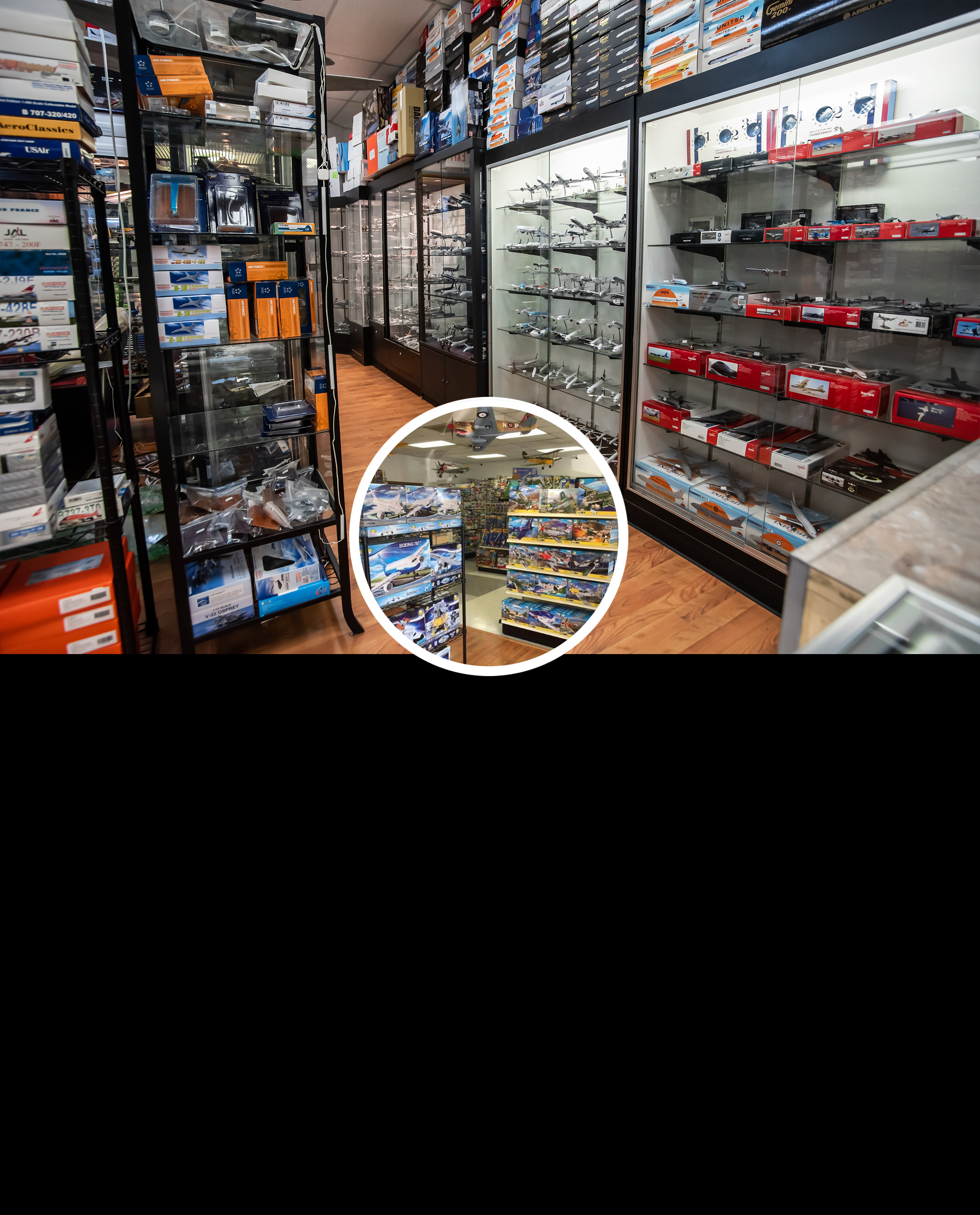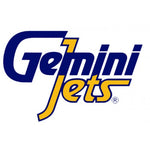All Categories
Follow MTS Aviation Models + More on Facebook to stay up to date on new arrivals, pre-sales and product unboxing videos!
Stay Connected
Follow NowWE BUY YOUR MODELS
Learn MoreCorgi
Corgi AA38908 1:48 Fokker D.VII (OAW) LTN. Kurt Monnington, Jasta 18
Undoubtedly one of the finest fighting aeroplanes of the Great War and definitely the most capable fighter to ever see Deutsche Luftstreitkrfte service, the Fokker D.VII was developed in response to the introduction of several new Allied fighter types, aircraft which gained a hard fought superiority of the skies over the Germans. Aircraft such as the Sopwith Camel and Royal Aircraft Factory SE5a had managed to turn the tables on the Luftstreitkrfte in the skies over the Western Front and the Germans knew something had to be done. The Military Aviation Bureau decided to hold a major competition to find a new fighter to redress this imbalance, inviting all the major aviation manufacturers, plus a few smaller companies, to send their aircraft for evaluation by current air aces, with the victorious aircraft almost certain to go into immediate production.Famous Dutch designer Anthony Fokker was sure that a design he had been working on was capable of winning this competition and instructed his talented lead designer Reinhold Platz to head the project, using all means at his disposal to have the aircraft ready in time. The new aircraft incorporated everything he had learned whilst designing combat aeroplanes, in addition to including some innovations never seen on an aircraft to this point, ensuring this machine had the best chance of success. Crucially, although initially intended to be powered by a rotary engine, the availability of the Mercedes D.IIIa engine gave the Fokker team access to a powerful, proven engine, which would allow for trouble free operation, something which would be crucial if this aircraft was to be introduced in large numbers and to have a combat impact.The prototype aircraft was delivered to the Adlershof airfield near Berlin for the trials in January 1918, where it was pitted against around thirty other competing aircraft, which interestingly included several other Fokker designs. Flown by some of the leading air aces of the day, including the Red Baron himself, Manfred von Richthofen, their D.VII design emerged victorious, after receiving enthusiastic support from von Richthofen and an initial order for 400 machines was placed immediately. With the aircraft proving to be everything the Luftstreitkrfte had been hoping for, the Fokker company were simply incapable of manufacturing the number of fighters required, so a deal was struck to allow their long-time competitor, Albatros Flugzeugwerke, to build the Fokker D.VII under licence. Eventually, three factories would be employed in producing this magnificent fighting aeroplane, Fokker at Schwerin and Albatros at Johannisthal and their subsidiary factory at Schneidemhl in Poland (OAW - Osterdeutsche Albatros Werke).On making its combat introduction, the Fokker D.VII came as an unpleasant surprize for Allied airmen. With an appearance which was neither as streamlined as the Albatros D.Va nor as menacing as the Fokker Dr.1, the new fighter looked almost agricultural in comparison, with its thick wings and boxlike fuselage. This appearance was extremely deceptive, as the D.VII was a thoroughbred fighting machine and Allied airmen quickly learned to respect their new aerial adversary. Possessing ample power and exceptional low speed performance, reports started to circulate that the D.VII could almost hang vertically on its propeller, firing at Allied aircraft from below, then diving away to build up speed for its next attack run.As greater numbers of this capable new aircraft began to appear over the Western Front, so German victory tallies began to increase and Allied airmen were once more forced into an attritional battle for aerial superiority above the trenches. In August 1918 alone, Fokker D.VIIs accounted for no fewer than 565 Allied aircraft destroyed, quickly earning such a fearsome reputation that it would later become a specific requirement of the armistice terms delivered by the Allies - all remaining Fokker D.VIIs must be surrendered to the Allies.In contrast to the relatively drab presentation of many Allied aircraft operating over the Western Front during the Great War, Luftstreitkrfte units routinely presented their aircraft in brightly coloured and highly distinctive markings, mainly for reasons of combat recognition, but also in part to highlight their confidence and fighting prowess. It is, however, sobering to think that these markings were applied on to nothing more than doped linen and how these intrepid airmen had absolutely no protection from gunfire or explosion whatsoever. Indeed, during the melee of a swirling dogfight, a pilot was in as much danger of being hit by a stray bullet from a friendly machine gun, as he was of being struck by the enemy.In what was rather an unusual occurrence, Royal Prussian Jasta 18 went through an unprecedented change in March 1918, when the unit's commander Rudolf Berthold took all of the pilots under his command with him, when he was transferred to another unit. This left new commander August Raben with a collection of relatively inexperienced pilots and a posting to the heavy fighting near Lille, but despite some early setbacks, soon saw their victory tally increasing. Jasta 18 were known as the 'Red Noses' for obvious reasons, but under Raben's command, he changed the colour of his aircraft from the previous blue to predominantly red and white. The unit's insignia of a black raven was retained, as this was strikingly similar to the personal emblem he carried on his own aircraft (after his surname) - most of the fighters of Jasta 18 would carry the black raven on either side of their fuselage.In addition to carrying the black raven on the side of his aircraft, Hamburg native Kurt Monnington also painted a sinister skull and crossbones on his aircraft, a personal emblem which was related to the Army unit with which he began his military career and where he won the Iron Cross 2nd class. Embarking on his flying service with a reconnaissance unit, Monnington would not score his first aerial victory until joining Jasta 18 and 'Staffel Raben' in March 1918, but would end the war with eight confirmed victories, the majority of which were scored over British bombers. Initially flying the Albatros D.V on joining Jasta 18, he took delivery of his new Fokker D.VII fighter during the following May and would use this aircraft to score all his aerial victories.Surviving the war, Monnington passed away in his native Hamburg in February 1939 aged 47, however, his name was circulated once more many years later, when his great nephew made a request for information relating to his pilot relative on various enthusiast websites. It appears that all his great granduncle's records, photographs and wartime memorabilia had been destroyed during an RAF bombing raid in 1944 and he was hoping that historians and enthusiasts could help him in the production a record of his Great War flying service. Hopefully, he found what he was looking for and that this model might make for a fitting addition.
Couldn't load pickup availability
Share
Shipping, Returns + Local Pickup
Shipping, Returns + Local Pickup

At MTS, we strive to deliver you the lowest possible shipping cost while taking extra time to package your order to ensure a safe delivery. Each item is inspected carefully before shipping and delicately packaged to avoid any damage during the shipping process.
The shipping cost for your order is based on the item's size, weight, shipping method and delivery address. Your shipping cost will be calculated based on the current shipping rates.
MTS is committed to shipping out all orders within 2 business days. Delivery time will vary based on your location.
All Pre-Orders will be shipped out within 2 business days of MTS receiving the item. The shipping cost will be calculated based on the current rates at the time of shipment.
International Orders Notice:
Please note: Shipping costs do not include any applicable foreign taxes, tariffs, or customs charges. These fees will be calculated and charged directly to the customer by the country's tax authority upon delivery.

Please exercise caution when removing your items from the packaging. Diecast models are very delicate. Propellers, antennas, and canopies will break easily if not handled with care. MTS inspects all items for damage prior to shipment. If you receive a damaged item, please contact MTS within 7 days of the shipping date at 937-320-1428 or email info@mtsaviationmodels.com, we will determine if a claim needs to be filed with the shipping company.
If you would like to return or exchange an undamaged item, please contact MTS within 14 days of the shipping date at 937-320-1428 or email info@mtsaviationmodels.com to start the return process. Once your item is returned to us, it will be inspected to ensure it is returned to us in a salable condition in the complete original packaging. You will receive a full refund for the item purchased but the original shipping charges are non-refundable.

Local Pickup is available Monday thru Saturday 11am-4:30pm. All orders placed by 1pm will be available for same day pickup. An email will be sent to you when your order is ready for pickup. If you prefer to meet us curbside, please call MTS at 937-320-1428 upon your arrival to the shop.








